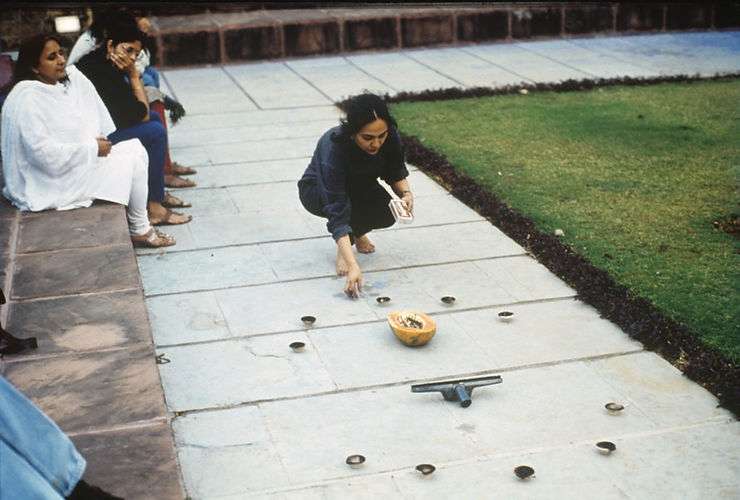
Find yourself wondering what does and does not count as performance art? Let’s cut to the chase:
In the simplest of terms, performance art refers to artworks created through actions performed by the artist or participants. They can be spontaneous, scripted, live, or documented.
Its essential elements include time, space, body, and the relationship between the artist-creator and the viewers. Primarily concept-based, performance art differs from performing arts such as dance or music, which can be largely skill-based. However, performance art often borrows from various art forms and disciplines.

Now for a brief history of performance art—it is widely thought to have had roots in the 1910s’ futurist performances and dada cabarets, and was regarded as an alternative form of expression at the time. However, it played a crucial role in the avant-garde art movements throughout the twentieth century.
Following the periods of modernism and Abstract Expressionism in the 1960s, several artists seemed to crave a departure from traditional art forms such as painting or sculpture. So the “dematerialization of the art object” took flight. Performance art during this period was highly focused on the body, reflecting the era’s political undercurrents and the rise of feminist movements.
Some key artists of the discipline include Marina Abramović (often called the ‘godmother of performance art’), Joseph Beuys, Zhang Huan, and Ana Mendieta. Pictured above, Newspaper Event (1963) by another artist named Carolee Schneemann was performed in New York. It used current affairs as a material in the artwork, with dancers creating sculptural forms out of piles of newspapers.

Although it can be hard to pin down the exact onset of performance art in India, some contemporary artists have approached performance art practices in ways that are unique to the Indian subcontinent. It was in Mumbai in 1970 that artist Bhupen Khakhar staged the opening of his exhibition by performing a ritual similar to both wedding processions and governmental inaugurations. It was his way of mocking the extravagant opening ceremonies. Such experimental practices were furthered by artists like Subodh Gupta, Bharti Kher, and Anita Dube, amongst many others.

Over the years, performance has found a more concrete place in the art world, integrating film, photographic and installation-based artworks alongside the artists’ actions. Rummana Hussain’s Living on the Margins (1995) had her applying washing detergent on her feet and walking around the NCPA’s gardens. It addressed the vulnerable position of women in times of political turmoil. Sonia Khurana’s Bird (1999) documented her nude, large body attempting the act of flying in various positions, in a manner that defied a fetishistic male gaze and established the body beyond its sexualised position.
More recently, performance has been an avenue to engage with our social realities and identities, and explore the burning questions that accompany our politicised experiences (more on this here). Take Maya Krishna Rao’s Loose Woman (2019), for instance. Through multiple mediums such as film, theatre, sound, and camera, it documented a woman’s experience of situations in which her skin is pushed, pulled, stretched. The work captured what it means to be a “loose woman” in India—exploring a chapter in women’s empowerment, and leaving audiences in awe of the 65-year-old artist who held the stage with an unpredictable performance for an hour.





